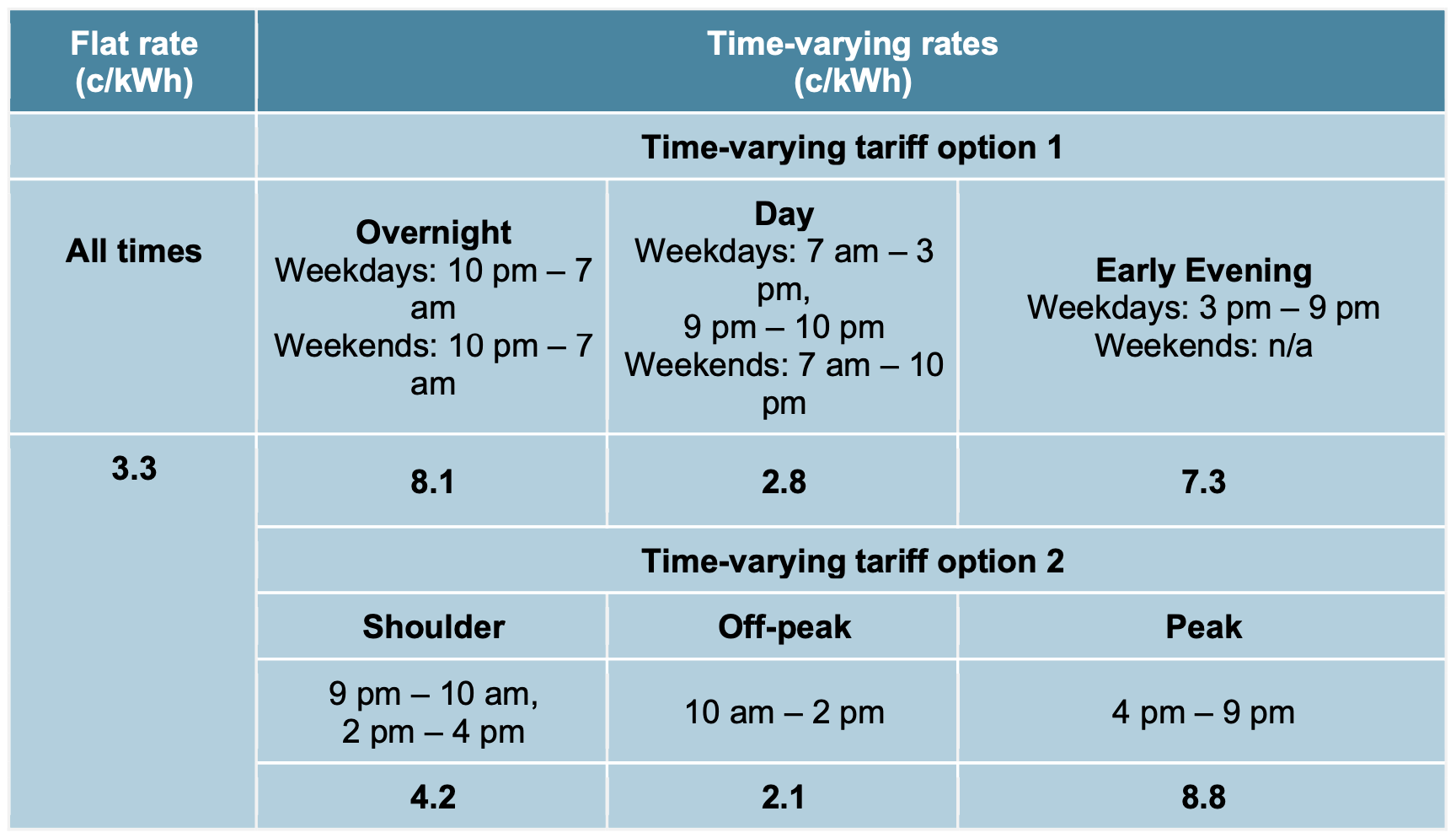Energy Coach - July
It's here - we're in the middle of winter, and most of us are feeling the chill, as well as the pain of high energy bills. Here's our roundup of what you can do to shrink your bills while keeping your home's comfort levels high.
Victorian Feed-in tariffs are going down, again. That's an unavoidable market reality that does make sense, but the regulator's argument on the rationale for solar does not.

The Victorian Essential Services Commission (ESC) regulates retail energy in Victoria, including setting the minimum allowable feed-in tariff (FiT) that retailers must offer for their solar customers. ESC sets the minimum FiT every year, and has just released its Draft Decision for proposed FiT rates to apply from 1 July 2024.

Victorian solar owners will be upset to learn that their solar FiT will is going down again next year, with the latest proposal of 3.3 c/kWh for single-rate solar FiT, and between 2.1c and 8.8c for variable rate FiT.

The Essential Services Commission has jurisdiction for retail energy only in Victoria. Its minimum feed-in tariff regulations do not apply elsewhere in Australia.
All retailers with at least of 5,000 customers must pay their eligible solar customers at least the minimum feed-in tariff when those customers export energy into the grid. Retailers can offer a higher FiT if they choose to.
Eligible customers are those in Victoria who have a generation facility (typically solar) with total output of less than 30 megawatts.
The ESC sets the minimum FiT for Victoria at a level equal to the calculated value of solar exports.
Retailers set their own prices for market offers, but are obliged to pay at least the minimum feed-in tariffs to their solar customers. When FiT costs go up, retailers will pass these costs on to customers in their market offers.
The ESC attempts to set minimum solar FiT to the level of the value of solar exports to avoid having cross-subsidy between solar and non-solar customers.
Setting the minimum feed-in tariff above the value of solar exports would result in non-solar customers subsidising solar customers through higher electricity rates. Conversely, if the feed-in tariffs were below the value of the solar exports, solar customers would be subsidising other energy users.
The 'costs retailers avoid' is the average solar-weighted wholesale price for electricity.
The proposed flat minimum feed-in tariff for 2024–25 is 33% lower than the feed-in tariff for 2023–24, because solar-weighted wholesale prices are forecast to decrease dramatically.
This decrease in solar-weighted wholesale pricing is driven by the continued growth in rooftop solar installations, leading to increasing supply and reduced demand for electricity during daylight hours - a situation known as the solar 'duck curve'.

Night-time wholesale electricity spot prices are higher than daytime, but are also forecast to decrease in 2024–25. This leads to the proposed early evening and overnight feed-in tariff rates also being lower than their equivalents in 2023–24.
A common complaint from solar owners (other than those households still on generous legacy Premium FiT Schemes) is that the FiT per kWh they earn is never nearly as much as the price per kWh they are charged for their energy imports. Many solar householders argue that they should receive equivalent FiT for their kWh exports as what they're charged for the energy they consume:
Can we stop Electrical Suppliers profiting from OUR solar??
by u/rusti_gotrage in australia
The Draft Decision documentation tackles this complaint directly, with the simple observation that a solar household is not the same as a retailer:
Solar customers are electricity generators. They are not electricity retailers.
No electricity generator gets paid retail rates for the energy it produces. In the NEM, electricity generators are subject to the bid process and merit-order pricing that determines what they will get paid for the electricity they produce.

Retail pricing will always be more expensive that wholesale, because energy retailing brings additional requirements and obligations that cost money to deliver.
Retailers must purchase enough energy to cover all their customers’ electricity consumption at any time of the day. This means they buy smaller amounts of low-priced daytime electricity and larger volumes of higher-priced electricity at night.
Despite fluctuations in the wholesale spot price, with its potentially significant volatility, retailers generally charge their customers set prices, regardless of the wholesale spot price at the time. By pricing in this way, retailers absorb pricing risk and shield their customers from wholesale market volatility.
Retailers also incur additional costs, beyond the wholesale prices for the electricity that they resell, including hedging, transportation, environmental and regulatory obligations.
So naturally, the prices charged by retailers will always be higher than the wholesale rates paid to generators, and will also be higher than the FiT rate that can be offered to solar generators.
The continuing decline in solar FiT rates the game for many solar households whose solar investment decisions may originally have been made on the basis of the solar FiT income potential of their system.
The ESC makes a very strange and short-sighted argument about the rationale for installing solar:
... the main financial benefit for solar customers is the savings to their electricity bills from using the electricity they generate to avoid paying retail rates for electricity. Therefore, customers should install a solar system that best aligns with their own consumption and not necessarily rely on exports.
...
For customers to maximise the return on their investment, it is best to install a system that roughly matches your daytime electricity requirements and not significantly more. If you connect a system which far exceeds your daily usage the return per kilowatt installed will be relatively low, and your payback period longer. [Bill Hero's emphasis]
While it's true that offsetting the need to import kWh will deliver the main financial benefit for solar households, due to the continuing decline in FiT revenue potential, this advice completely ignores the importance of setting up your home in anticipation of the future energy environment, including replacing gas appliances such as hot water, heating, and cooktop with electric alternatives, and transitioning to an electric vehicle.

Bill Hero has partnered with SolarQuotes, the leading Solar quote provider in Australia, to help you get up to 3 no obligation solar quotes from fully qualified installers, absolutely for free.
Our friends at SolarQuotes have this to say about the Victorian ESC statement on solar:
This is terrible advice from the ESC for most people buying solar panels – and typical of bureaucrats who can only think in averages and need to get out into the real world more often. ... if you size your solar system to match your average daytime electricity demand, you are setting yourself up for disappointment. Especially in Victoria with their gloomy winters. Most people should fill their roof with solar because in the real world:
• Big systems generate much more in the morning and late afternoon when you use the most electricity.
• Big systems generate much more in winter and overcast days when you use more electricity.
• Big systems prepare you for a home battery.
• Big systems prepare you for an electric car – whether you’ll charge it on weekdays or weekends.
• Big systems prepare you for home electrification (heating, cooking, hot water).
• Adding extra solar during the initial installation is surprisingly cheap due to how the rebate works.
• Adding solar panels after the fact is expensive, and sometimes impossible due to changing standards.
• The grid needs at least 2x more rooftop solar to decarbonise.
• Excess production on mild, sunny days is easily solved with curtailment.
Savings as a Service is the blog site and newsletter from Bill Hero. Subscribe now and get your energy savings tips and information delivered fresh to your inbox every month.